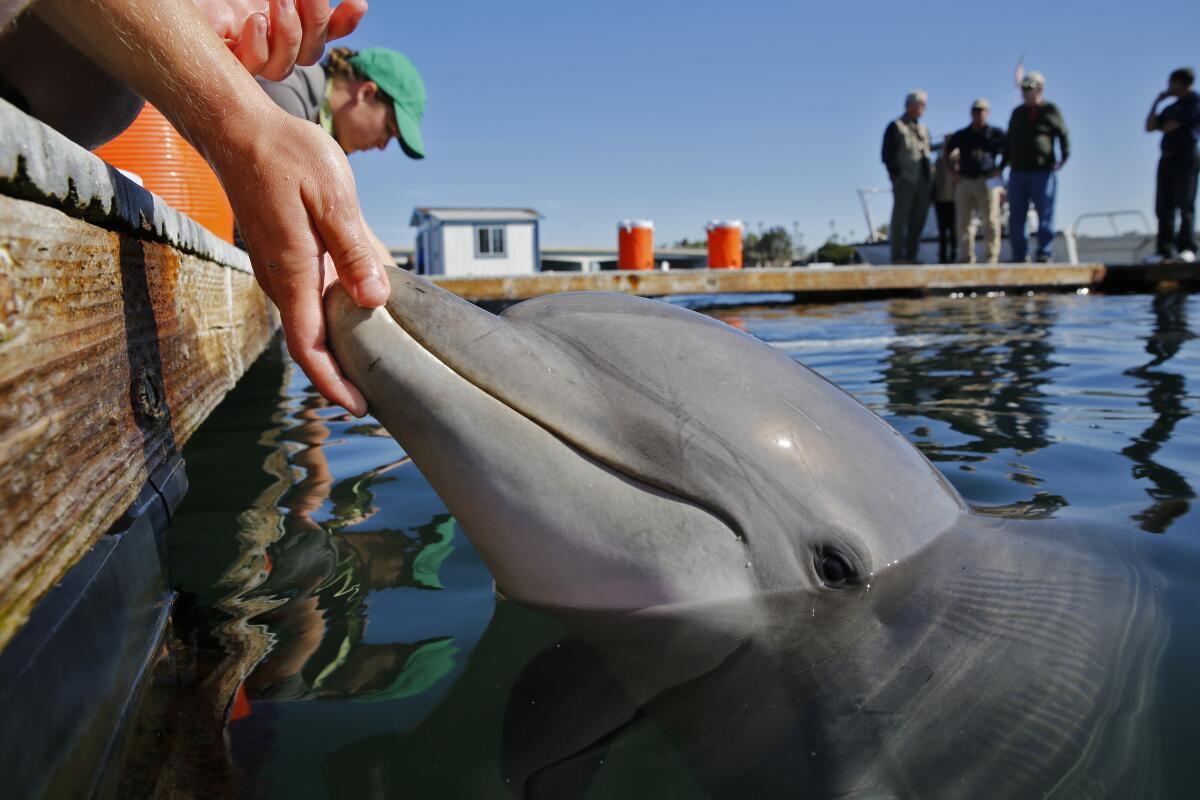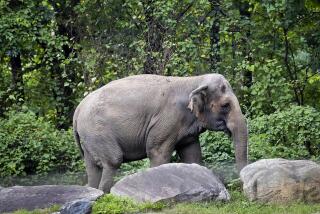Op-Ed: Embracing a new philosophy that demands dignity and justice for animals

Animals suffer injustice at our hands. We need a powerful theoretical strategy to diagnose injustice and suggest remedies. As a philosopher, I recommend a version of the theory of political justice known as the “Capabilities Approach,” to shift the way we think about animal rights from other influential approaches to animal justice, such as anthropocentric approaches that rank animals in terms of likeness to humans, or the promising but flawed approach supplied by classical Utilitarianism.
Originally developed to guide international development agencies working with human populations, the Capabilities Approach, I believe, provides a good basis for animal entitlements as well. (The original architect of the approach is the Nobel Prize–winning economist and philosopher Amartya Sen, with whom I collaborated on this theory but soon developed my own very different version.) The approach focuses on meaningful activities and on the conditions that make it possible for a creature to pursue those activities without damage or blockage. In other words, to lead a flourishing life.
Other frameworks for animal welfare focus narrowly on pain as the primary bad thing a creature experiences. But this approach focuses on many different types of meaningful activity (including movement, communication, social bonding and play), any of which can be blocked by the interference of others, whether by malice or by negligence.
My approach argues that a society is minimally just only if it secures to each individual citizen a basic threshold amount of a list of “Central Capabilities,” which are defined as substantial freedoms, or opportunities for choice and action in areas of life that people in general have reason to value. Capabilities are core entitlements, closely comparable to a list of fundamental rights. But the Capabilities Approach emphasizes that the goal is not simply high-sounding words on paper. It is to make people really able to select that activity if they want to. So, it emphasizes material empowerment more than many rights-based approaches do.
Essentially, then, my approach is about giving striving creatures a chance to flourish. This emphasis on flourishing and on a wide plurality of key opportunities is what makes it so suitable as a basis for a theory of animal justice, as well as human justice. The approach does not single out human moral powers as more crucial for political choice than other aspects of animal living, and it sees all human powers as parts of the equipment of a mortal and vulnerable animal who deserves a fair shake in life — as do all sentient animals.
Just like humans, animals live amid a staggering number of dangers and obstacles. They too have an inherent dignity that inspires respect and wonder. We see that dignity intuitively when we watch dolphins swimming freely through the water in social groupings, echo-locating their way around obstacles and leaping for joy; when we see a group of elephants caring communally for their young and attempting to rear them in safety, despite the ubiquity of man-made threats.
Our sense of wonder is an epistemic faculty oriented to dignity: It says to us, “This is not just some rubbish, something I can use any way I like. This is a being who must be treated as an end.” Why, then, should we think we are more important than they are, more deserving of basic legal protection?
Humans will have to take the lead in making the laws and establishing the institutions of government, but there is no reason why humans should do this only for and about other humans. Furthermore, there is no good reason to say that only some sentient creatures matter. Sentience — the ability to feel, to have a subjective perspective on the world — is a necessary and sufficient basis for being a subject of justice.
Animals do not speak human language, but they have a wide range of language-like ways of communicating about their situation, and if we humans happen to be in the driver’s seat politically, it should be our responsibility to attend to those voices, to figure out how animals are doing and what obstacles they face. They actively express themselves in many ways, and it is our responsibility to translate that into political action.
The stories animals tell us give us ideas about how law needs to promote the flourishing of both companion animals and wild animals — preventing cruelty, promoting nutrition and, more generally, conveying ideas of reciprocity, respect and friendship. This task is so exhilarating and so urgent.
The ideal outcome would be for all the nations of the world (listening astutely to the demands of animals and those experts who most knowledgeably represent them) to agree to a legally enforceable constitution for the various animal species, each with its own list of capabilities to be protected, and each supplied with a threshold level beneath which non-protection becomes injustice. Animals would then be protected no matter where they are, just as whales would be protected all over the world by the International Whaling Commission — if that flawed body did a decent job.
This constitution could then be supplemented by more specific nation-based laws for animals living within a given national jurisdiction, in a way tailored to those specific contexts. However, we know that humanity’s halting steps toward international accountability for human injustice have so far not been terribly successful.
Even in the human case, our best hope currently is with the laws of individual nations. If that is so for humans, it is far more so for animals. Right now, therefore, the Capabilities Approach aims to supply a virtual constitution to which nations, states and regions may look in trying to improve (or newly frame) their animal-protective laws. This will take time and work; so too does the task of framing and protecting human rights.
There is no nation in which animals are citizens, though they should be seen as citizens with rights whose nonfulfillment is injustice. We are only at the beginning of a political journey toward justice for animals.
Martha C. Nussbaum is professor of law and philosophy at the University of Chicago. This essay was adapted from her forthcoming book, “Justice for Animals: Our Collective Responsibility.”
More to Read
A cure for the common opinion
Get thought-provoking perspectives with our weekly newsletter.
You may occasionally receive promotional content from the Los Angeles Times.










